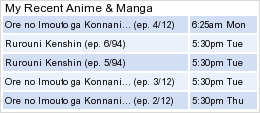I think I have a MUCH better idea on the power consumption now. (And by the way, any electrical engineer who saw my previous estimate would be right to say "What the hell are you talking about boy?!")
"By today's standards for electronic computers the ENIAC was a grotesque monster. Its thirty separate units, plus power supply and forced-air cooling, weighed over thirty tons. Its 19,000 vacuum tubes, 1,500 relays, and hundreds of thousands of resistors, capacitors, and inductors consumed almost 200 kilowatts of electrical power."
-http://ftp.arl.army.mil/~mike/comphist/eniac-story.html
The PDP-8/M uses a H740 switch mode power supply that provides +15V @ 1A, +5V @ 17A, -15V @ 5A together with LTC-L, PWR OK L, PWK OK EN, AC LO L, and DC LO L signals (it should be noted that not all of these signals are used within the PDP-8M). This power supply is also used within the 5.25″ PDP-11/05 and PDP-11/10.
-http://pdp8.co.uk/tag/pdp-8m/
The ENIAC took 200 kilowatts. It ran on discrete vacuum tubes
The PDP-8/M took 5V @ 17 amps. That is 85 watts (right?). It ran on about the same discrete components I am going to need.
So, baseing the power I'm going to need off of a similar CPU, I should be needing a supply that uses less than 5v @ 17A. (The PDP was a complete computer AND was 12-bit, not 4-bit.)
To visualize how completely off I was, I included the ENIAC. That was the very first computer. The guess I had for power EXCEEDED THAT OF THE ENIAC!!!! Whoa, I was off! Kerm, I believe that when it comes to stuff like this, you are always right. So, the supply should be LESS than 17 amps for sure!
edit:
UltDev. I do believe you have answered all of my questions with those links. All that remains now is for me to finish my schematic, run it by you and some other really smart people, and build the prototype.
And all those times I said microarchitecture, I should have been saying schematic. A microarchitecture is a very specific thing, and I should have conducted a lot more research before insisting such a thing on my superior. (Same is true for Kerm. I do believe I have him not posting replies to ME, because I was a real jerk to him. I should probably go back and delete those dumb things I said... but I didn't, because things can't be erased from people minds. Sorry, I'm not really good with people.
Sorry, I'm not really good with people. 
 )
)
"By today's standards for electronic computers the ENIAC was a grotesque monster. Its thirty separate units, plus power supply and forced-air cooling, weighed over thirty tons. Its 19,000 vacuum tubes, 1,500 relays, and hundreds of thousands of resistors, capacitors, and inductors consumed almost 200 kilowatts of electrical power."
-http://ftp.arl.army.mil/~mike/comphist/eniac-story.html
The PDP-8/M uses a H740 switch mode power supply that provides +15V @ 1A, +5V @ 17A, -15V @ 5A together with LTC-L, PWR OK L, PWK OK EN, AC LO L, and DC LO L signals (it should be noted that not all of these signals are used within the PDP-8M). This power supply is also used within the 5.25″ PDP-11/05 and PDP-11/10.
-http://pdp8.co.uk/tag/pdp-8m/
The ENIAC took 200 kilowatts. It ran on discrete vacuum tubes
The PDP-8/M took 5V @ 17 amps. That is 85 watts (right?). It ran on about the same discrete components I am going to need.
So, baseing the power I'm going to need off of a similar CPU, I should be needing a supply that uses less than 5v @ 17A. (The PDP was a complete computer AND was 12-bit, not 4-bit.)
To visualize how completely off I was, I included the ENIAC. That was the very first computer. The guess I had for power EXCEEDED THAT OF THE ENIAC!!!! Whoa, I was off! Kerm, I believe that when it comes to stuff like this, you are always right. So, the supply should be LESS than 17 amps for sure!
edit:
UltDev. I do believe you have answered all of my questions with those links. All that remains now is for me to finish my schematic, run it by you and some other really smart people, and build the prototype.
And all those times I said microarchitecture, I should have been saying schematic. A microarchitecture is a very specific thing, and I should have conducted a lot more research before insisting such a thing on my superior. (Same is true for Kerm. I do believe I have him not posting replies to ME, because I was a real jerk to him. I should probably go back and delete those dumb things I said... but I didn't, because things can't be erased from people minds.























